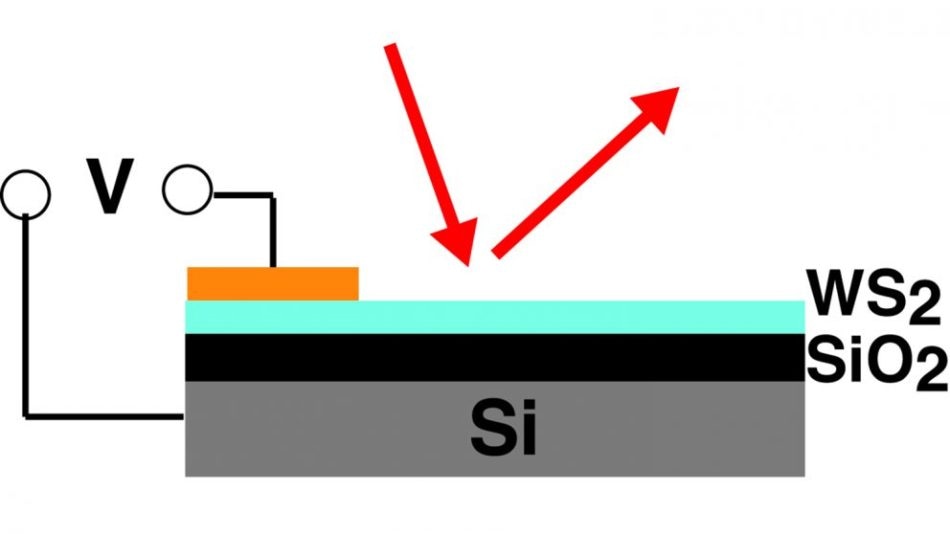May 26 2017
 Researchers develop technique to electrically manipulate light through interaction with an atomically thin semiconductor. (Credit: NC State)
Researchers develop technique to electrically manipulate light through interaction with an atomically thin semiconductor. (Credit: NC State)
A team of researchers from North Carolina State University have discovered a method for manipulating light using electric fields.
Our method is similar to the technique used to provide the computing capabilities of computers. In computers, an electric field is used to turn electric current on or off, which corresponds to logic 1 and logic 0, the basis of binary code. With this new discovery, a light may be controlled to be strong or weak, spread or focused, pointing one direction or others by an electric field. We think that, just as computers have changed our way of thinking, this new technique will likely change our way of watching. For instance, it may shape a light into arbitrary patterns, which may find applications in goggle-free virtual reality lenses and projectors, the animation movie industry or camouflage.
Linyou Cao, Assistant Professor of Materials Science and Engineering, NC State
Controlling light using electric fields is no easy. Photons, the basic units of light, are neutral – they do not possess any charge, so they typically do not react to electric fields. Instead, light may be manipulated by tweaking the refractive index of materials. Refractive index denotes the way materials reflect, scatter, transmit, and absorb light. The more a material’s refractive index can be controlled, the more control one can have over the light that interacts with that material.
“Unfortunately, it is very difficult to tune refractive index with electric fields,” Cao says. “Previous techniques could only change the index for visible light by between 0.1 and 1 percent at the maximum.”
Cao and his partners have formulated a method that allows them to alter the refractive index for visible light in certain semiconductor materials by 60 % – two orders of magnitude better than earlier results. The team studied a class of atomically thin semiconductor materials called transition metal dichalcogenide monolayers. Specifically, they worked with thin films of molybdenum sulfide, tungsten selenide, and tungsten sulfide.
We changed the refractive index by applying charge to two-dimensional semiconductor materials in the same way one would apply charge to transistors in a computer chip. Using this technique, we achieved significant, tunable changes in the index within the red range of the visible spectrum.
Linyou Cao, Assistant Professor of Materials Science and Engineering, NC State
Presently, the new method allows researchers to tweak the refractive index by any quantity up to 60% – the higher the voltage applied to the material, the greater the degree of alteration in the index. And, since the researchers are using the same methods found in current computational transistor technologies, these alterations are dynamic and can be done billions of times per second.
“This technique may provide capabilities to control the amplitude and phase of light pixel by pixel in a way as fast as modern computers,” says Yiling Yu, a recent graduate of NC State and the paper’s lead author.
This is only a first step. We think we can optimize the technique to achieve even larger changes in the refractive index. And we also plan to explore whether this could work at other wavelengths in the visual spectrum.
Linyou Cao, Assistant Professor of Materials Science and Engineering, NC State
Cao and his team are also seeking industry partners to develop new applications based on the discovery.
The paper titled “Giant Gating Tunability of Optical Refractive Index in Transition Metal Dichalcogenide Monolayers” has been published in the Nano Letters journal. Lead author of the paper is Yiling Yu, a Ph.D. student at NC State. Co-authors include Yifei Yu and Lujun Huang of NC State; Haowei Peng of Temple University; and Liwei Xiong of Wuhan Institute of Technology. The research was conducted with support from the National Science Foundation under grant ECCS-1508856, and from the Center for the Computational Design of Functional Layered Materials at Temple University, which is funded by the Department of Energy under grant DESC0012575.